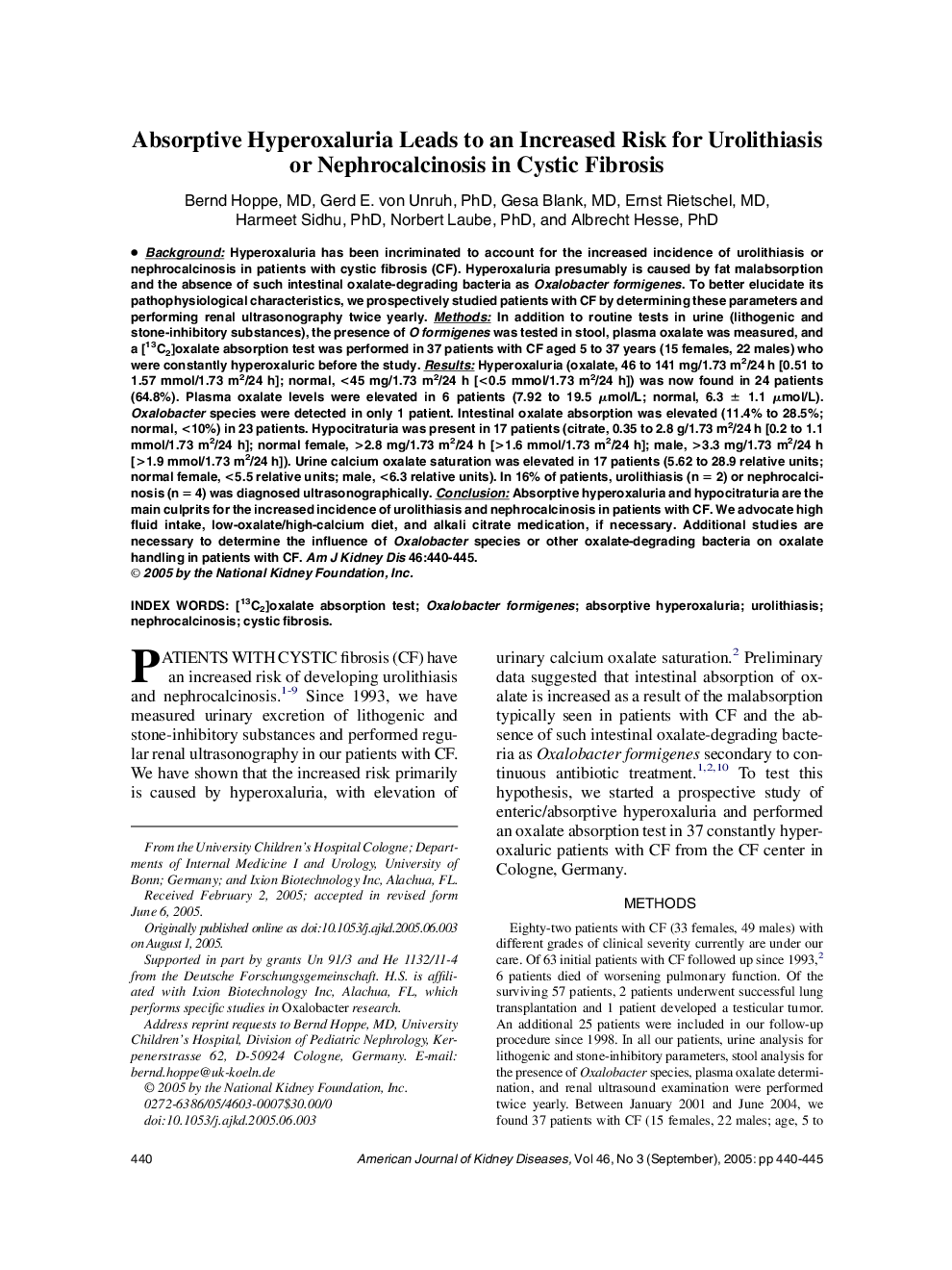| Article ID | Journal | Published Year | Pages | File Type |
|---|---|---|---|---|
| 10047419 | American Journal of Kidney Diseases | 2005 | 6 Pages |
Abstract
Background: Hyperoxaluria has been incriminated to account for the increased incidence of urolithiasis or nephrocalcinosis in patients with cystic fibrosis (CF). Hyperoxaluria presumably is caused by fat malabsorption and the absence of such intestinal oxalate-degrading bacteria as Oxalobacter formigenes. To better elucidate its pathophysiological characteristics, we prospectively studied patients with CF by determining these parameters and performing renal ultrasonography twice yearly. Methods: In addition to routine tests in urine (lithogenic and stone-inhibitory substances), the presence of O formigenes was tested in stool, plasma oxalate was measured, and a [13C2]oxalate absorption test was performed in 37 patients with CF aged 5 to 37 years (15 females, 22 males) who were constantly hyperoxaluric before the study. Results: Hyperoxaluria (oxalate, 46 to 141 mg/1.73 m2/24 h [0.51 to 1.57 mmol/1.73 m2/24 h]; normal, <45 mg/1.73 m2/24 h [<0.5 mmol/1.73 m2/24 h]) was now found in 24 patients (64.8%). Plasma oxalate levels were elevated in 6 patients (7.92 to 19.5 μmol/L; normal, 6.3 ± 1.1 μmol/L). Oxalobacter species were detected in only 1 patient. Intestinal oxalate absorption was elevated (11.4% to 28.5%; normal, <10%) in 23 patients. Hypocitraturia was present in 17 patients (citrate, 0.35 to 2.8 g/1.73 m2/24 h [0.2 to 1.1 mmol/1.73 m2/24 h]; normal female, >2.8 mg/1.73 m2/24 h [>1.6 mmol/1.73 m2/24 h]; male, >3.3 mg/1.73 m2/24 h [>1.9 mmol/1.73 m2/24 h]). Urine calcium oxalate saturation was elevated in 17 patients (5.62 to 28.9 relative units; normal female, <5.5 relative units; male, <6.3 relative units). In 16% of patients, urolithiasis (n = 2) or nephrocalcinosis (n = 4) was diagnosed ultrasonographically. Conclusion: Absorptive hyperoxaluria and hypocitraturia are the main culprits for the increased incidence of urolithiasis and nephrocalcinosis in patients with CF. We advocate high fluid intake, low-oxalate/high-calcium diet, and alkali citrate medication, if necessary. Additional studies are necessary to determine the influence of Oxalobacter species or other oxalate-degrading bacteria on oxalate handling in patients with CF.
Related Topics
Health Sciences
Medicine and Dentistry
Nephrology
Authors
Bernd MD, Gerd E. PhD, Gesa MD, Ernst MD, Harmeet PhD, Norbert PhD, Albrecht PhD,
